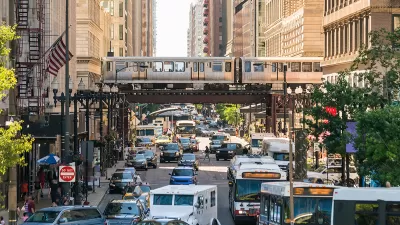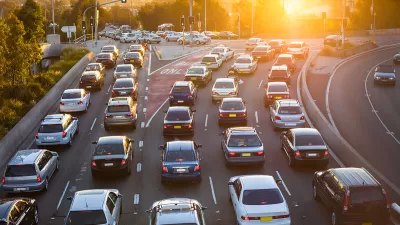In his work developing plans for six new cities in China, Peter Calthorpe has a unique perspective on what the country must do to build sustainable cities to house its growing urban population. He shares his insights with Fortune's Brian Dumaine.
Over the next 25 years, 300 million new residents are expected to fill China's cities. "To put that in perspective," says Dimaine, "Providing housing for that many people is roughly the equivalent of building from scratch all the cities and towns in the U.S. and doing it in only a quarter of a century." To help meet this immense challenge, Calthorpe's firm is assisting in planning several new cities in the country. Based on this experience, and his interactions with officials in the country, Calthorpe discusses how he believes China can find a third way of urban planning that veers from the American precedent of auto-oriented sprawl and the current Chinese model of "high-density sprawl."
Calthorpe sees China's urban history as a guide to its urban future. "As the Chinese create more and more superblocks of apartments and giant shopping centers, they're destroying a whole stratum of their traditional walkable society. The Chinese used to live on the streets in wonderfully social ways, being able to stroll or ride their bikes to cafés and small shops. This creates an affordable, vital urban lifestyle." And he isn't the only one who sees this transition as unsustainable. The nation's leaders, he says, "understand that their current urban forms aren't working." [See Iwan Baan's wonderful photo essay for a sense of the form of a traditional Chinese town]
So what could this third way look like? It will have a lot less cars than current patterns suggest, and a lot less superblocks. Says Calthorpe: "We're going to see a very different China 20 years from now. I think they're at a watershed moment where the old model of superblocks and cars is unsustainable. We'll see cities with auto-free streets, more mass transit, and more bikes. Overall they will be more livable. It's a daunting task, yet the impact will be monumental if we can move the needle even a little."
FULL STORY: Rethinking China's cities

Planetizen Federal Action Tracker
A weekly monitor of how Trump’s orders and actions are impacting planners and planning in America.

Map: Where Senate Republicans Want to Sell Your Public Lands
For public land advocates, the Senate Republicans’ proposal to sell millions of acres of public land in the West is “the biggest fight of their careers.”

Restaurant Patios Were a Pandemic Win — Why Were They so Hard to Keep?
Social distancing requirements and changes in travel patterns prompted cities to pilot new uses for street and sidewalk space. Then it got complicated.

Platform Pilsner: Vancouver Transit Agency Releases... a Beer?
TransLink will receive a portion of every sale of the four-pack.

Toronto Weighs Cheaper Transit, Parking Hikes for Major Events
Special event rates would take effect during large festivals, sports games and concerts to ‘discourage driving, manage congestion and free up space for transit.”

Berlin to Consider Car-Free Zone Larger Than Manhattan
The area bound by the 22-mile Ringbahn would still allow 12 uses of a private automobile per year per person, and several other exemptions.
Urban Design for Planners 1: Software Tools
This six-course series explores essential urban design concepts using open source software and equips planners with the tools they need to participate fully in the urban design process.
Planning for Universal Design
Learn the tools for implementing Universal Design in planning regulations.
Heyer Gruel & Associates PA
JM Goldson LLC
Custer County Colorado
City of Camden Redevelopment Agency
City of Astoria
Transportation Research & Education Center (TREC) at Portland State University
Camden Redevelopment Agency
City of Claremont
Municipality of Princeton (NJ)





























